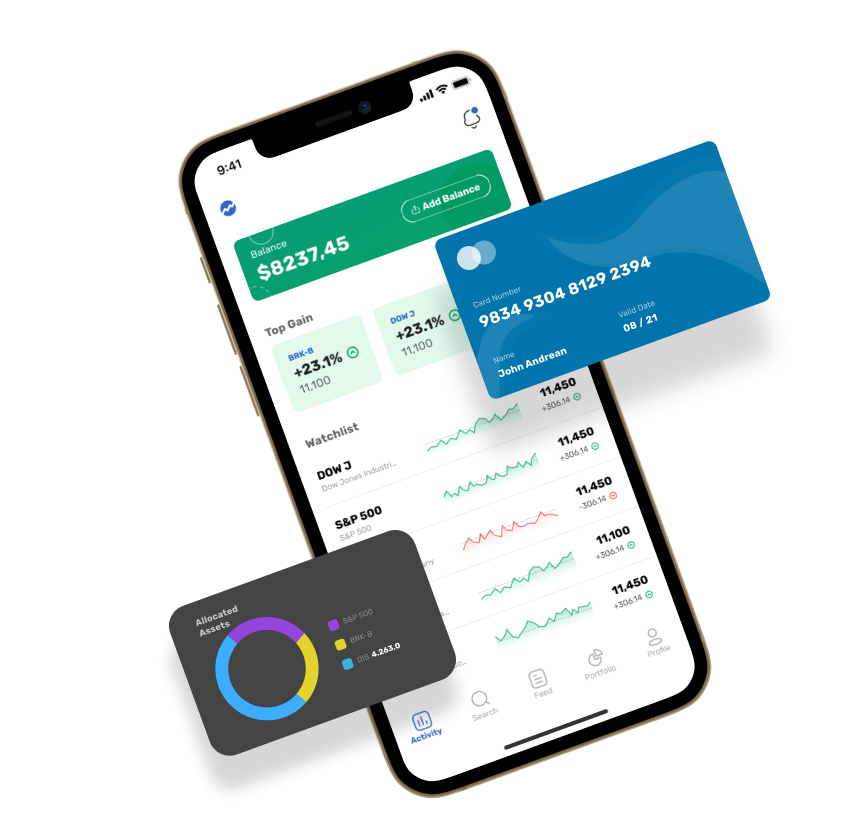20 Good Info To Deciding On AI Stock Picker Analysis Sites
20 Good Info To Deciding On AI Stock Picker Analysis Sites
Blog Article
Top 10 Tips For Evaluating The Integration And Compatibility Of Ai Predictive/Analyzing Trading Platforms
AI platforms for trading stocks that can predict and analyze stocks based on AI must have compatibility with each other. A platform that seamlessly integrates with your current tools such as systems, workflows, and processes can significantly enhance efficiency and productivity. Here are the top 10 tips for evaluating the compatibility and integration between these platforms.
1. Check Brokerage Integration
Supported brokers: Ensure the platform integrates with the brokerage you prefer or trading account.
Trade execution: Determine if the platform supports direct trade execution via the integrated broker.
Account synchronization: Make sure that the platform can sync in real time balances and positions of your account and transaction history.
2. Review API Availability
API access: Ensure the platform you choose to use has an API (Application Programming Interface), which allows developers to develop customized tools and automate workflows.
API documentation: Look to see if there are clear examples of how the API can be utilized.
Rate limits: Check whether there are acceptable rates for the API and if it is able to cope with the expected volume of use.
3. Integration of Third-Party Tools
Popular Tools: Ensure that the platform integrates with other tools, such as Google Sheets and Excel.
Export and import of data. Make sure that the platform can easily export/import from or into any other software.
Extensions/Plugins: Find out if your platform supports plugins and extensions to add more features.
4. Test Compatibility using Operating Systems
Desktop compatibility - Make sure that the platform you select is compatible with Windows, macOS and Linux.
Mobile compatibility: Find out whether the platform provides an app for mobile devices on iOS and Android.
Web-based access: Determine that the platform can be access via a browser on the web for more flexibility.
5. Evaluating Data Integrity Capabilities
Data sources: Ensure the platform integrates with various data sources (e.g. market data providers, news feeds, sentiment on social media).
Real-time analytics: Ensure that your platform supports real-time analysis.
Import historical data: Determine if the platform permits importing historical data to backtest or analyze.
6. Check compatibility with cloud and on-premise
Cloud-based platforms: Ensure that the platform is accessible from any place with an internet connection.
On-premise Solutions: If you would rather deploy on premises, make sure the platform is compatible.
Take a look at the hybrid model. It combines on-premise and cloud capabilities.
7. Check for Cross-Platform Synchronization
Device synchronization. Ensure data and settings are synced across all platforms (desktops tablets and mobiles).
Real-time updates: Check if your changes made on one device instantly show up on the other devices.
Offline Access: Examine for any limitations on the functionality of the platform or data access while it is offline.
8. Examine the compatibility of trading strategies
Algorithmic trading - Make sure that the platform you choose supports automated or algorithms trading strategies.
Custom indicators: Find out whether you are allowed to utilize custom indicators or scripts.
Strategy backtesting. Check whether the platform allows strategies that are tested back using historical data.
9. Examine Security and Compliance
Data encryption: Ensure that the platform uses encryption both for data that is in transit and at rest.
Authentication : Make sure that the platform is compatible with secure authentication methods (e.g. two-factor verification).
Regulatory Compliance: Check if your platform complies the relevant regulations.
10. Test Scalability Performance
Scalability: The platform needs to be able accommodate growing volume of data and users.
Performance under load: Check if the platform remains flexible during market conditions with high volatility.
Utilization of resources - Make sure that the platform effectively uses system resources like CPU, memory or bandwidth.
Bonus Tips
Feedback from customers: Read user reviews and testimonials in order to determine the capabilities to integrate the platform.
Free trial period: You can use a demo or free trial to test the platform's compatibility with your existing workflows and applications.
Support for customers: Make sure the platform provides a solid support in case of integration issues.
Follow these tips to assess the integration and compatibility between AI stock predicting/analyzing platforms and your trading systems in place, and ensure that they increase your trading efficiency. Have a look at the best homepage on ai investment platform for blog tips including ai investment platform, ai investing platform, investing ai, using ai to trade stocks, best ai stock trading bot free, stock ai, ai investing platform, ai stock trading app, ai investment platform, using ai to trade stocks and more.
Top 10 Tips For Assessing The Scalability Ai Stock Predicting Trading Platforms
It is essential to determine the capacity and performance of AI-driven trading and stock prediction platforms. This will guarantee that they can manage the growing volume of data in addition to market complexity and demands from users. Here are the top 10 tips to assess scalability:
1. Evaluate Data Handling Capacity
TIP: Find out if the platform is able to analyse and process large data sets (e.g. historic stock data, live market feeds, as well as other data sources like news or social media).
Why: Scalable systems must manage data volumes that are increasing with no performance loss.
2. Test Real Time Processing Capabilities
Check out how well your platform can handle streaming data in real time, like live stock quotes or breaking news.
What is the reason? Analyzing in real-time is crucial in trading decisions, and delay can result in miss opportunities.
3. Check for Cloud Infrastructure and Elasticity
Tip - Determine if a platform uses cloud infrastructure, e.g. AWS or Google Cloud.
The reason: Cloud platforms are elastic and they can be scalable up or down based on requirements.
4. Assess Algorithm Efficiency
TIP: Check the computational efficiency (e.g. deep learning, reinforcement learning) of the AI models that are used to predict.
The reason is that complex algorithms are resource-intensive. Therefore optimizing them will assist you in scaling.
5. Explore the possibilities of Parallel Processing and Distributed computing
Check whether the platform utilizes distributed computing or parallel computing frameworks.
What is the reason? They can speed up data processing across many nodes.
Examine API Integration. API Integration.
Check the platform's capability to incorporate APIs from other sources.
Why? The platform is able to adapt to the changing requirements of market conditions and data sources because of seamless integration.
7. Analyze User Load Handling
Tip: Simulate high user traffic to see how the platform performs under stress.
Why is that a platform that can scale has to maintain its performance when users grow.
8. Review the model of Retraining and its Adaptability
Tip: Evaluate how frequently and effectively AI models are retrained with new data.
Why? Models have to constantly adjust to changing markets in order to remain accurate.
9. Check Fault Tolerance (Fault Tolerance) and Redundancy
Tip. Check that your platform is equipped with failover systems and redundancy to handle hardware or software failures.
The reason: Downtime is expensive for trading. Therefore, fault tolerance is essential to scalability.
10. Monitor Cost Efficiency
Examine the cost of your platform that includes cloud resources, storage and computing power.
What is the reason? Scalability must come at a price that is affordable. This means balancing performance against expense.
Bonus Tip: Future-Proofing
Make sure the platform incorporates the latest technologies (e.g. quantum computing, advanced NLP) and is able to adjust to regulatory changes.
If you concentrate your attention on these factors, you can accurately assess the scale of AI prediction and trading platforms. This guarantees that they are durable and efficient and well-equipped for future expansion. Take a look at the most popular stocks ai for blog info including chart ai trading, ai trading tool, ai stock prediction, ai stock trader, how to use ai for copyright trading, ai stock trader, ai investment tools, ai stock trader, ai trading tool, ai stock price prediction and more.